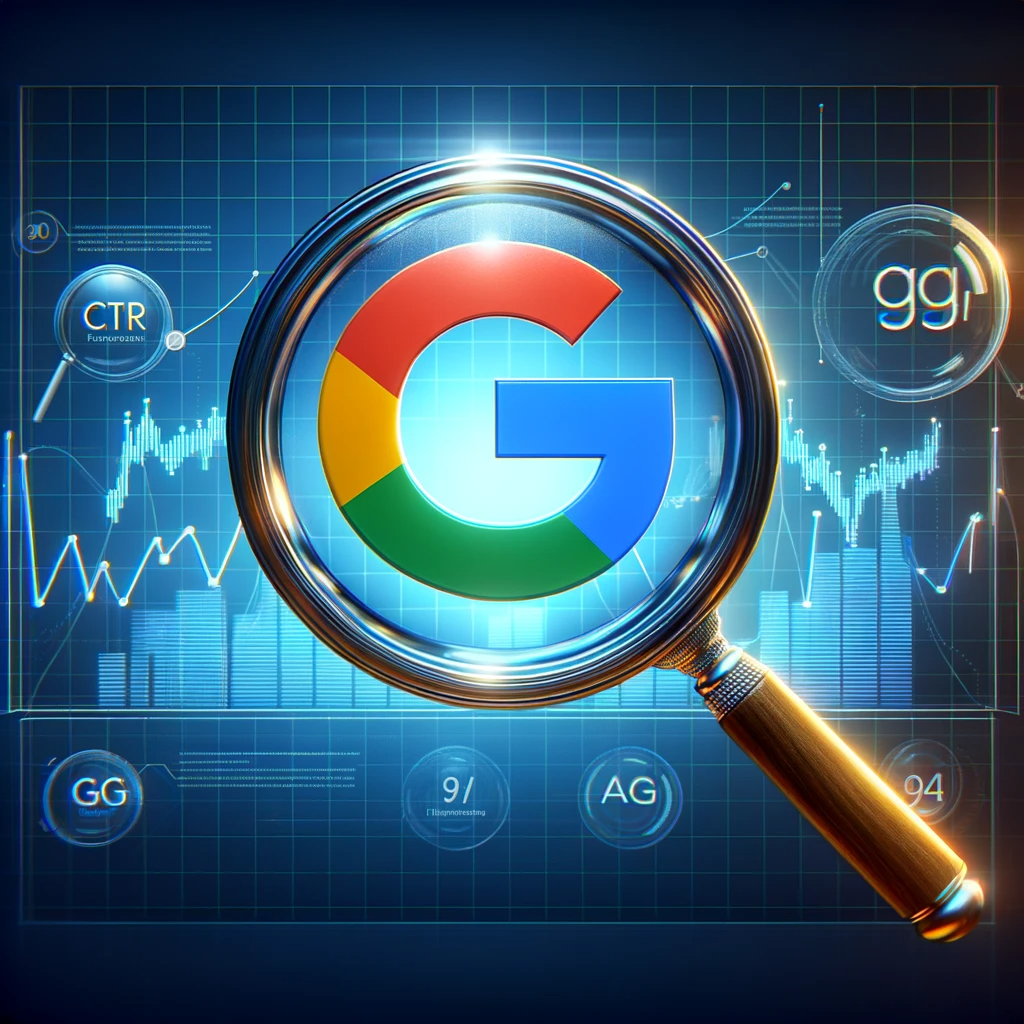
Why Choose Google for Advertising?
Google stands as the titan of search engines, handling billions of searches daily from millions of users globally. This immense reach, coupled with the platform’s seasoned history of nearly 20 years, establishes Google Ads as a premier authority in online advertising.
Here’s a critical aspect to consider: your competitors are likely utilizing Google Ads, possibly even bidding on your branded terms. With hundreds of thousands of businesses leveraging Google Ads for visibility, relying solely on organic search rankings means you’re losing valuable screen real estate to competitors’ ads.
Effectiveness of Google Ads:
The question isn’t just “Does Google Ads work?” but “How well can it work for your business?” With strategic planning, optimized ad campaigns, and a streamlined lead flow, Google Ads can deliver high-ROI marketing campaigns.
Key Google Ads Terminology:
Ad Extensions:
These are additional snippets of information that enhance your ads, providing more reasons for people to choose your business.
They include Sitelink (additional links your customers might find useful), Call (adds a phone number), Location (shows a map or distance to your business), Offer (special deals or promotions), and App (a link to download your app).
AdRank:
This is a value that determines your ad position in the auction process, influencing how visible it is to potential customers. A higher AdRank means more people see your ad, increasing the likelihood of engagement. It’s calculated using your bid amount and Quality Score.
Bidding:
At the heart of Google Ads is a bidding system. You decide the maximum amount you’re willing to pay for a click on your ad. Various strategies can be applied, including cost-per-click (CPC), cost per thousand impressions (CPM), and cost per engagement (CPE).
Campaign Types:
Google Ads offers several campaign types, each designed to meet different advertising goals, such as search (text ads shown on Google search results), display (image-based ads for visual appeal), video (engaging ads on YouTube), shopping (promoting products directly), app (driving app downloads), smart (using Google’s machine learning to optimize your campaign), and performance max (utilizing all Google Ads features for maximum reach).
Click-Through Rate (CTR):
This metric shows the percentage of people who click on your ad after seeing it, indicating how compelling your ad is to your target audience.
Conversion Rate (CVR):
This is the percentage of users who take a desired action (like making a purchase or signing up for a newsletter) after clicking on your ad. A high CVR signals that your ad’s messaging is consistent with the landing page, providing a seamless experience.
Display Network:
The Google Display Network (GDN) encompasses millions of websites where your ads can appear. This network allows your ads to be displayed alongside content that’s relevant to your products or services.
Impressions:
This term refers to the number of times your ad is displayed, regardless of whether it was clicked or not. Tracking impressions helps you understand the visibility of your ad.
Keywords:
These are crucial words or phrases in your content that make it possible for people to find your site via search engines. A website that is well-optimized for search engines “speaks the same language” as its potential visitor base.
Negative keywords prevent your ad from being triggered by certain words or phrases, ensuring it’s only seen by people looking for what you offer.
PPC:
Pay-per-click is an advertising model where you pay each time your ad is clicked, not just seen. It’s a way of buying visits to your site, rather than attempting to “earn” those visits organically.
Quality Score:
Google assesses the quality of your ads and landing pages, assigning a Quality Score. A higher score can lead to lower prices and better ad positions.
Remember, the success of your Google Ads doesn’t solely rely on high investment but on a strategic approach, understanding these terms, and how they work together in your advertising campaign.
Continuous analysis and optimization based on these metrics are crucial for driving success in Google advertising.

Understanding the Mechanics of Google Ads:
Google Ads operates as a bridge connecting searchers, advertisers, and the platform itself, creating a dynamic ecosystem where businesses achieve visibility, and consumers find products and services that match their queries.
Here’s an in-depth exploration of the intricate process:
The Strategic Bidding War on Keywords:
The journey begins with advertisers selecting keywords relevant to their business and placing bids on them. These keywords are what potential customers might use in their search queries.
Depending on the competition and value, bids can span from a modest amount to several hundred dollars per click. However, it’s not just a financial investment; it’s a strategic endeavor.
Advertisers must analyze keyword relevance, search volume, and competition. They set daily or monthly budgets to control expenditure, ensuring they don’t overspend while competing effectively in the auction.
Google Ads offers flexibility here, allowing advertisers to adjust, pause, or halt spending anytime, providing control over advertising costs.
The Searcher’s Query Initiates the Action:
The process is triggered when a potential customer enters a query on Google, using keywords that advertisers have bid on. The Search Engine Results Page (SERP) they see isn’t random; it’s a carefully calibrated response to their search intent.
Ads displayed are not just about who pays more, but who provides the most relevant answer to the query.
Ad Rank:
The Lightning-Fast Calculation Behind the Scenes:
In the blink of an eye, Google performs an ‘Ad Rank’ calculation to determine which ads to display and their order on the SERP. This isn’t solely based on the highest bid.
Google combines the bid amount with other factors like the ad’s Quality Score (a metric comprising the ad’s relevance, expected click-through rate, and landing page experience), the context of the search (such as the searcher’s location and device), and the expected impact of extensions and other ad formats.
This ensures that users see ads that are not only relevant but also from advertisers who maintain a standard of quality.
The User’s Click and Beyond:
The ads are listed, but the journey doesn’t end there. A user might click an ad that seems to best answer their query, leading them to the advertiser’s landing page.
What happens next is critical: the page must deliver on the ad’s promise, providing detailed information, easy navigation, and a clear call-to-action.
Whether the user makes a purchase, requests more information, or exits, might depend on how seamless and satisfying this experience is. However, not all interactions result in immediate conversions.
Users might return to the SERP for other options, compare offers, or even postpone the decision. This is where retargeting strategies can be employed, reminding users of their interest in the product or service.
It’s crucial to understand that Google Ads isn’t just about visibility; it’s about connection and conversion. Success requires a deep understanding of one’s audience, crafting compelling ads, maintaining high-quality landing pages, and analyzing data for continuous optimization.
It’s a comprehensive, ongoing strategy demanding attention and refinement at every stage.
Decoding the Dynamics of Google Ads: Key Factors and Strategies
Navigating the Complexities of AdRank:
In the realm of Google Ads, AdRank isn’t just a metric; it’s the digital pulley that hoists your ads into visibility. This crucial determinant juggles two core components: your bid amount and the Quality Score.
While the bid quantifies your advertising budget’s prowess, the Quality Score is a litmus test of your ad’s overall quality and relevance, anchored significantly by your Click-Through Rate (CTR).
The Quality Score:
A Triad of Excellence:
Achieving a stellar Quality Score transcends mere keyword stuffing. It’s an art that balances three critical elements: the relevance of your keywords to the search queries, the resonance of your ad copy and Call-To-Action (CTA) with the searcher’s intent, and the user experience on your landing page.
This triad forms the bedrock of your ad campaigns, influencing not just your AdRank but also your cost-per-acquisition and ad placement. A robust Quality Score can be a financial cushion, potentially lowering costs while securing prime ad real estate.
Location: Geographical Precision Meets Market Relevance:
Location settings in Google Ads aren’t mere pins on a map; they’re strategic levers that align your ads with your market base.
Whether you’re a brick-and-mortar store drawing locals or an e-commerce platform shipping globally, your ad’s geographical settings should mirror your operational terrain. This precision ensures your ads appear to users who find them most relevant, optimizing your ad spend.
Keywords:
The Crux of Searcher Intent:
In the Google Ads universe, keywords are the bridges connecting advertisers’ offerings with searchers’ needs.
They require meticulous research and selection, ensuring alignment with potential customers’ search intents.
Crafting ad groups with a concise array of targeted keywords enhances the likelihood of your ad surfacing in relevant searches.
Match Types: Navigating the Spectrum of Relevance:
Match Types are Google Ads’ response to the nuances of human search behavior. They range from the Broad Match’s generous latitude to the Exact Match’s stringent precision.
Advertisers can wield these settings to cast a wide net or narrow their focus, controlling which searches trigger their ads.
While Broad Match offers extensive reach, it demands vigilance to ensure relevance. Conversely, Exact Match promises high relevance at the cost of reduced visibility. Navigating this spectrum requires strategic calibration and continuous refinement.
The Art of Ad Copy:
Crafting Compelling Narratives:
An ad’s copy is its verbal attire, determining whether it blends in or stands out. Effective ad copy must resonate with the searcher’s query, align with selected keywords, and address the user’s pain points with clear, compelling solutions. It’s about weaving narratives that don’t just inform but connect and convince.
Ad Extensions: Enhancing Visibility and Interaction:
Ad Extensions are akin to a Swiss Army knife in Google Ads, enhancing your ad’s functionality without extra costs.
They range from Sitelink Extensions, offering additional website links, to Call Extensions, facilitating immediate contact.
Location Extensions appeal to local searchers, Offer Extensions highlight promotions, and App Extensions streamline app downloads.
Each extension is an opportunity to expand your ad’s real estate, provide additional value, and increase the likelihood of user interaction.
In conclusion, mastering Google Ads is a journey of understanding and strategically manipulating various factors.
From the technical finesse of AdRank optimization to the creative flair of ad copywriting, and the strategic deployment of ad extensions, each element plays a pivotal role in the campaign’s success.
Continuous analysis, testing, and refinement are the hallmarks of a robust, effective Google Ads strategy, ensuring that your ads are not just seen but also resonate and inspire action.
Advanced Strategies for Enhancing Google Ads Effectiveness
Understanding User Behavior with Audience Insights:
Beyond keywords and ad copy, understanding your audience’s behavior is crucial. Google Ads provides Audience Insights, which allows advertisers to delve into users’ demographics, interests, and more.
By analyzing this data, you can tailor your campaigns more precisely, ensuring your ads resonate with the target audience’s preferences and behaviors.
Leveraging Remarketing Strategies:
Not all users will convert on their first interaction with your ad. Remarketing is a powerful strategy that targets users who have previously interacted with your website or app but didn’t make a purchase.
By creating customized ads that remind or incentivize these users to return, you can increase the likelihood of conversions.
Optimizing for Mobile:
With the surge in mobile searches, ensuring your ads and landing pages are optimized for mobile devices is no longer optional.
This means fast loading times, easy navigation, and a clear CTA on a small screen. Google Ads offers tools to test and improve mobile usability.
Using Negative Keywords:
Negative keywords are a vital tool that prevents your ad from being triggered by certain words or phrases. They help filter out irrelevant traffic, thereby saving money on wasted clicks and ensuring your ads appear to those most likely to convert.
Experimenting with A/B Testing:
A/B testing, or split testing, involves experimenting with different versions of your ads to see which performs better. You can test different elements such as ad copy, headlines, display URLs, and CTA buttons.
Continuous testing and optimization are key to improving your ads’ performance over time.
Tracking and Analytics:
Success in digital advertising is heavily reliant on data analysis. Utilize Google Ads’ in-built conversion tracking and integrate with tools like Google Analytics to gain a holistic view of how users interact with your ads and website.
These insights are invaluable for informed decision-making and ongoing campaign optimization.
Seasonal and Event-Based Advertising:
Tailoring your ads based on seasons, holidays, or current events can make them more relevant and timely. This strategy can lead to higher engagement rates, especially when combined with special promotions or exclusive offers.
Understanding the Impact of Ad Fatigue:
Over time, the same audience may become overexposed to a particular ad, leading to ad fatigue. Regularly refreshing your ad creative, messaging, and even targeting parameters can keep your content fresh and engaging.
Compliance with Google’s Advertising Policies:
To maintain a positive user experience, Google has strict advertising policies that govern what types of content are allowed. Ensure your ads comply to avoid penalties, including suspension of your Google Ads account.
Investing in Continuous Learning:
The digital marketing landscape, especially Google Ads, is ever-evolving. Regular updates, new features, and shifting user behaviors necessitate continuous learning and adaptation.
Stay updated with the latest trends and best practices, participate in forums, and consider formal learning or certifications through resources like Google’s Skillshop.
By considering these additional strategies and nuances, advertisers can craft more robust, dynamic, and successful campaigns. Google Ads is a powerful platform, but its true potency is unlocked only when its vast array of tools and strategies are leveraged thoughtfully and proactively.
Mastering Google Ads Retargeting for Improved Conversions
Retargeting, also known as remarketing, is a potent strategy used within Google Ads to re-engage individuals who have previously interacted with your digital presence.
This could include visitors who have browsed your website, used your app, or engaged with your content in some way, but did not make a purchase or complete a desired action.
Here’s how it works:
Setting Up Your Audience:
To start retargeting, you first need to define your audience. This is typically done by placing a piece of code (often referred to as a “retargeting tag” or “pixel”) on your website or app. This code tracks visitors and adds them to your retargeting list.
Google Ads allows you to customize the size of your audience by setting criteria for who gets included in this list, such as how recently they visited, which specific pages they viewed, and whether they took any specific actions.
Tailoring Your Ads:
People on your retargeting list have already shown interest in your product or service, so your ads should be tailored based on their interactions with your site.
For instance, you can show them ads related to the products they viewed or put in their shopping cart.
This requires creating dynamic ads that automatically show the right products or services to people who have previously shown interest in them.
Bidding and Ad Placement:
Just like regular Google Ads campaigns, you can control where your retargeting ads appear and how much you spend on them.
However, because these individuals are already familiar with your brand, you might consider bidding higher to ensure your ads appear prominently and frequently enough to recapture their attention.
Frequency Capping:
It’s essential to set a limit on how often your ads are shown to the same person, so they don’t feel overwhelmed or annoyed by your brand.
This is known as frequency capping, and it helps you make sure you’re not overexposing your audience to your ads.
Conversion Tracking:
As with all ad campaigns, tracking the performance of your retargeting ads is crucial. This involves using tools to understand how many users are returning to your site and completing the desired actions after seeing your retargeting ads.
This data is invaluable for assessing the ROI of your retargeting campaign and making informed adjustments.
Privacy Considerations:
Retargeting involves tracking user behaviour, so it’s crucial to be transparent and follow all applicable privacy laws and regulations.
Ensure users are aware they are being retargeted by including clear notices on your website, and provide them with options to opt-out if they wish.
Retargeting is a powerful tool in your Google Ads arsenal, often leading to higher conversion rates as you’re advertising to people who have already expressed interest in what you have to offer.
However, it’s a strategy that requires careful planning, execution, and continuous optimisation to ensure it’s cost-effective and doesn’t alienate potential customers.
Latest news, how to guides and more
Mastering Google Ads: How to Choose the Right Keywords for Your Campaign
How to Choose the Right Keywords for Your Google Ads Campaign In the realm of digital marketing, Google Ads reigns supreme, presenting businesses with an unparalleled opportunity to spotlight their offerings to a targeted cohort of consumers who are actively searching...

